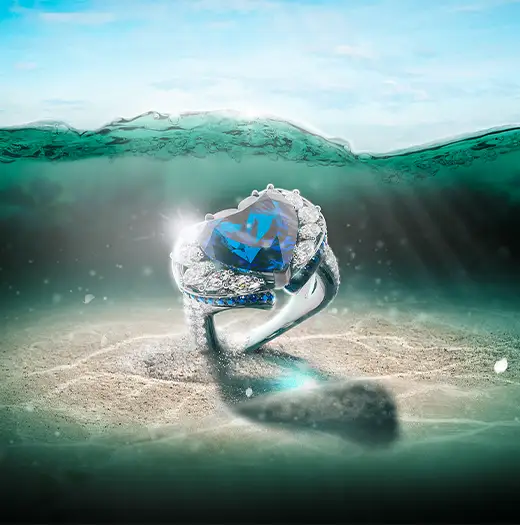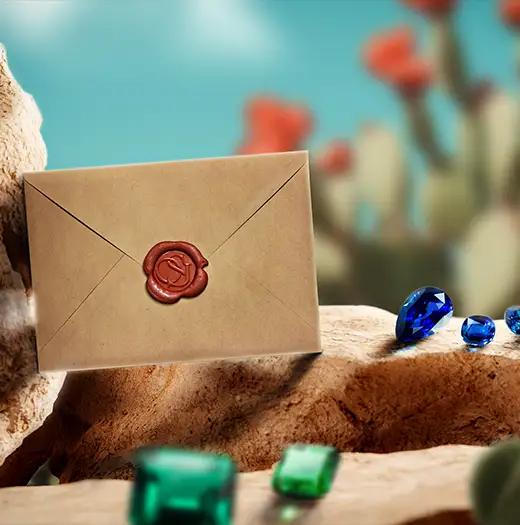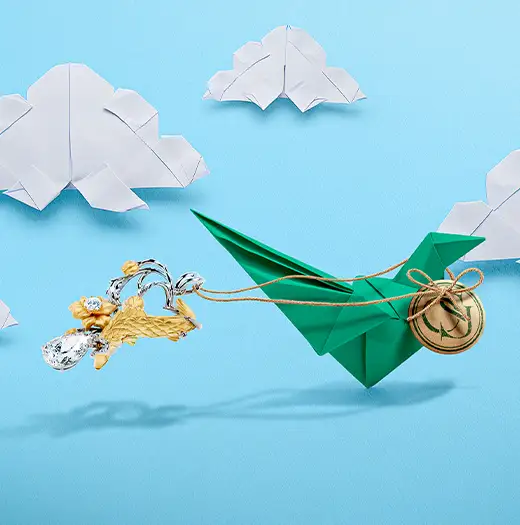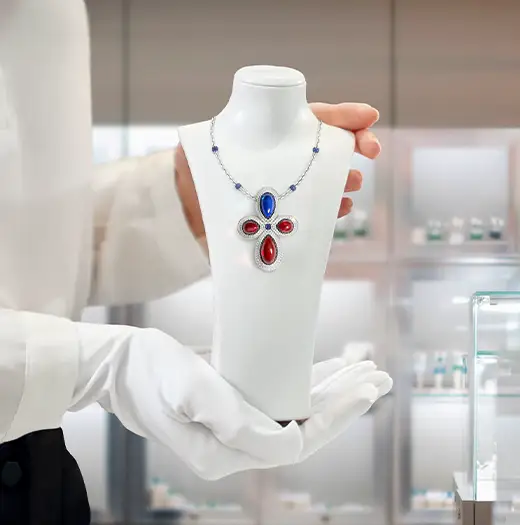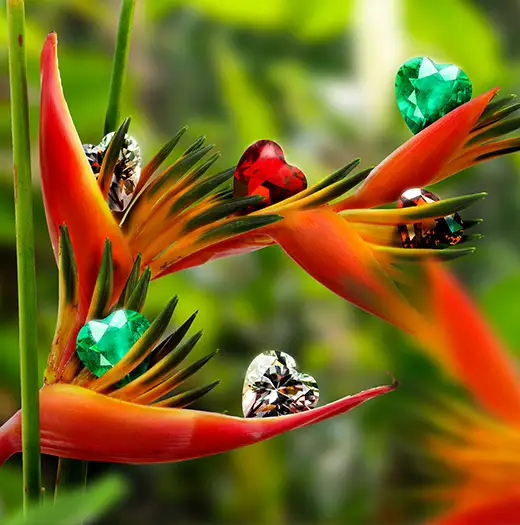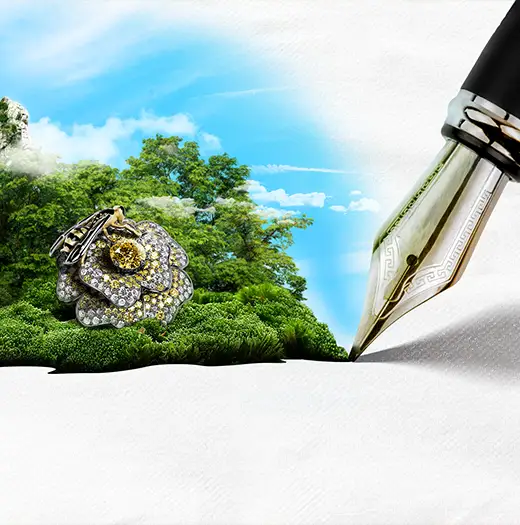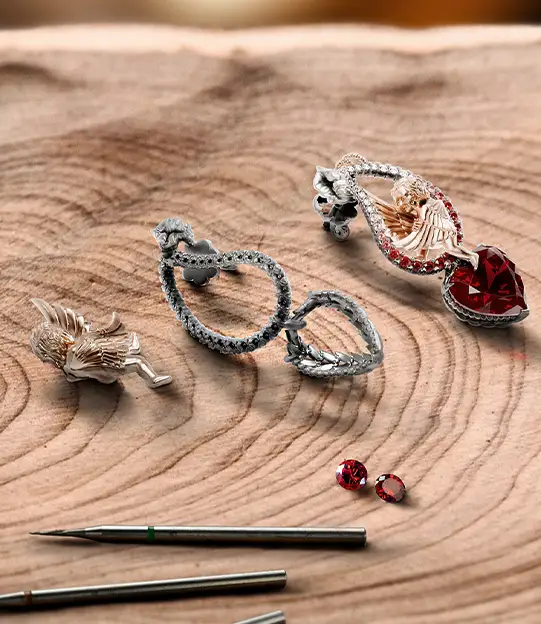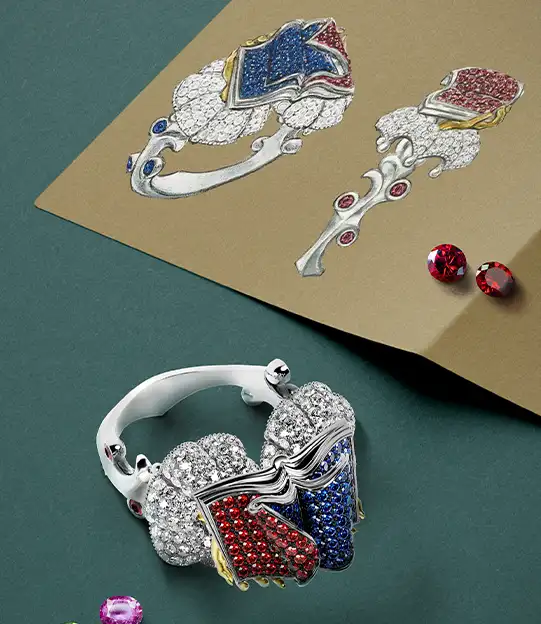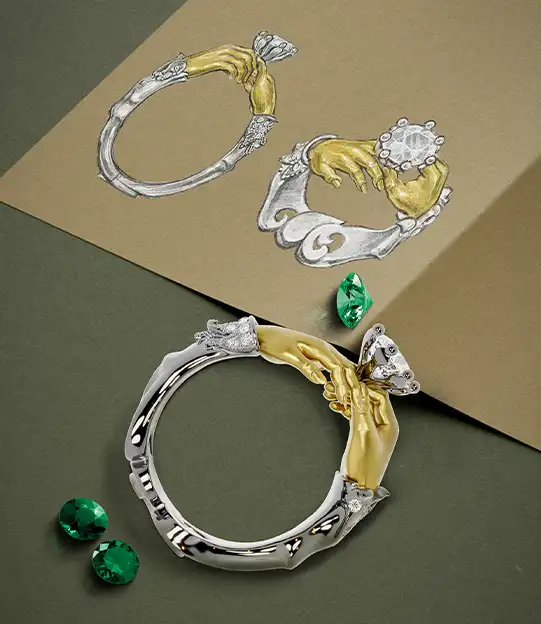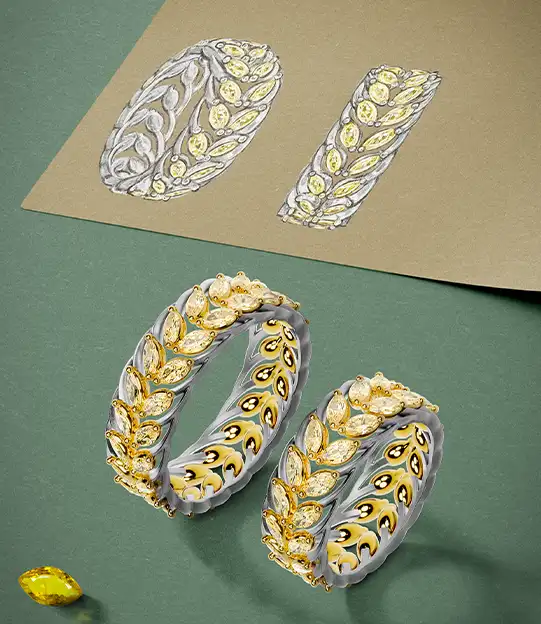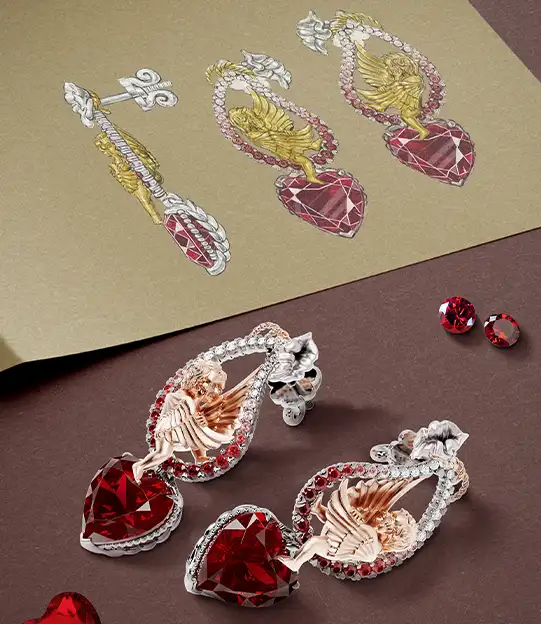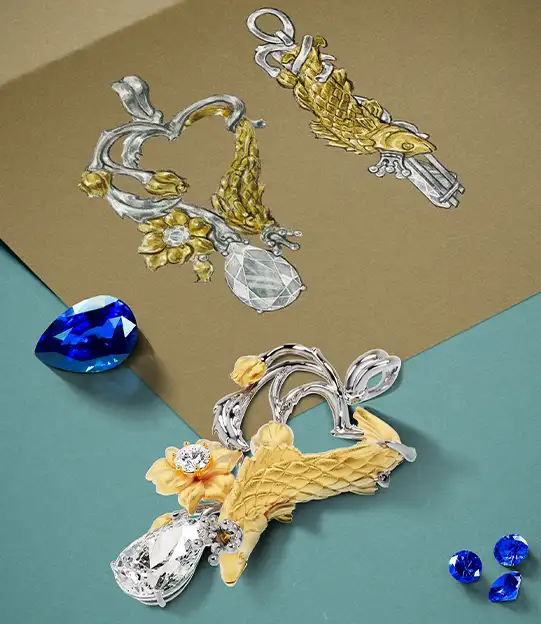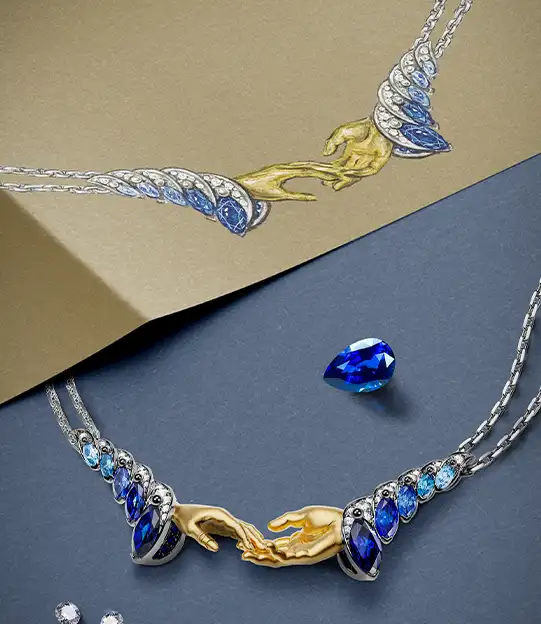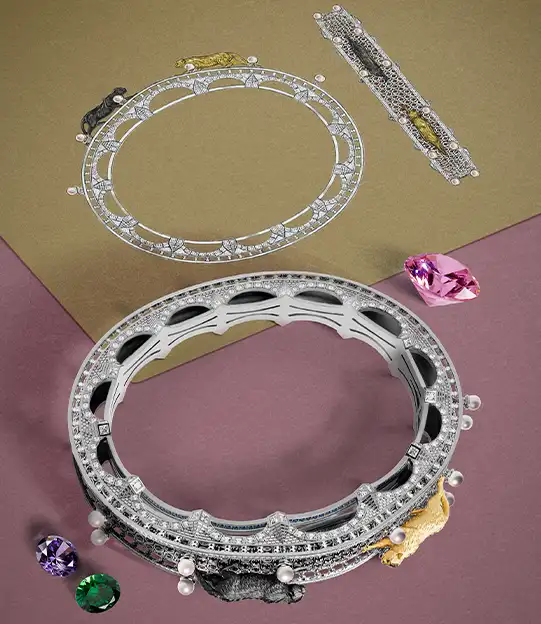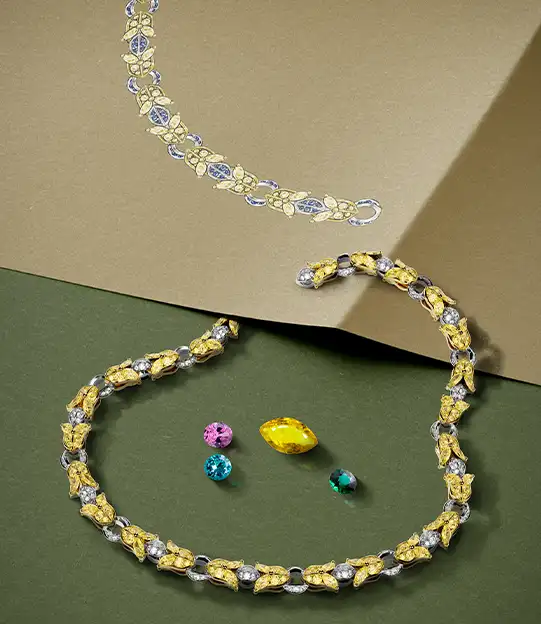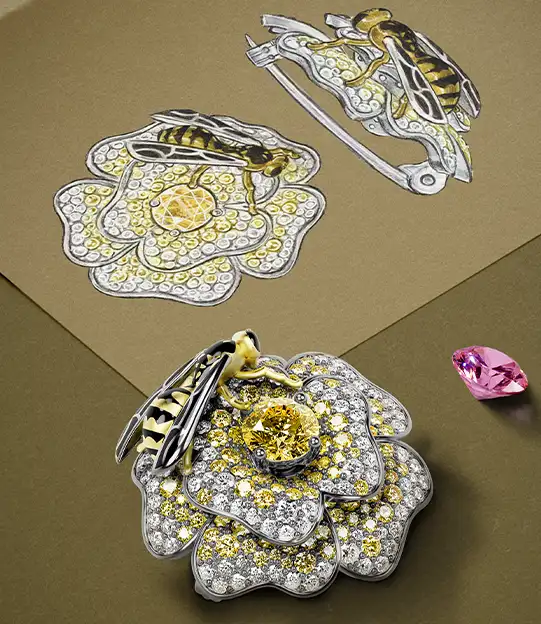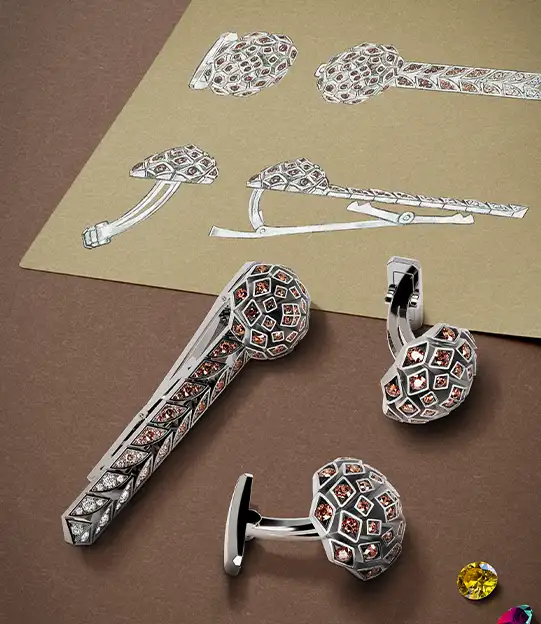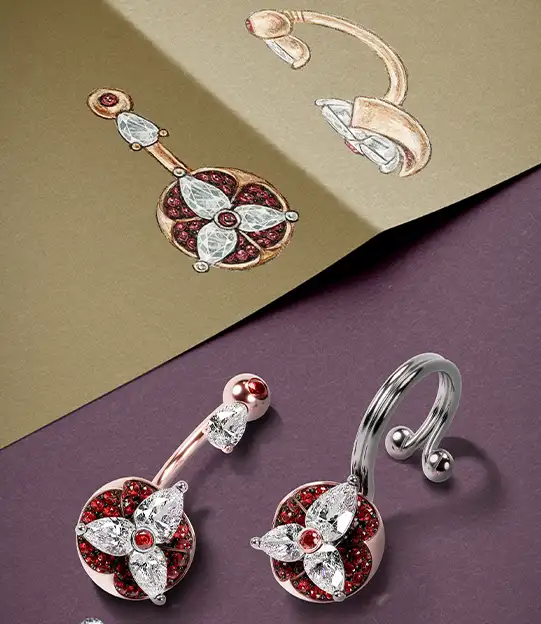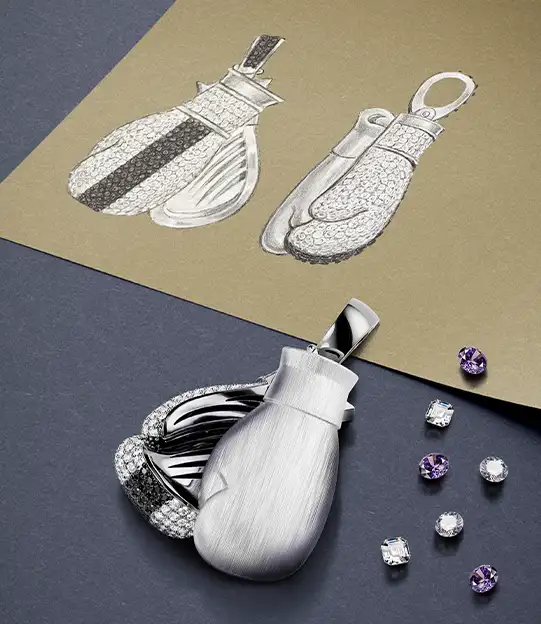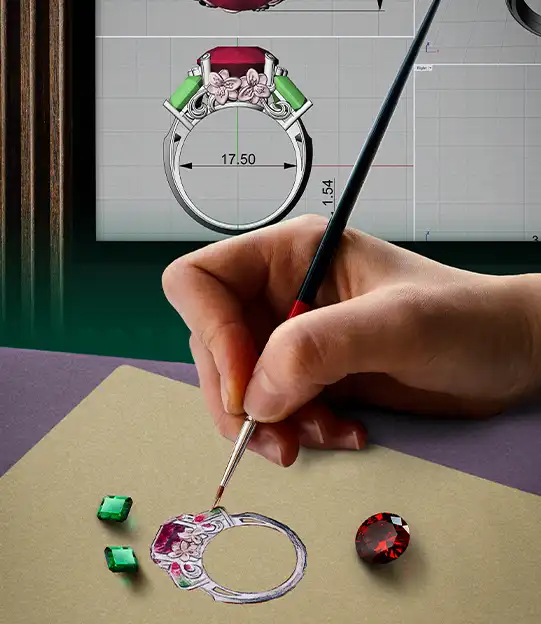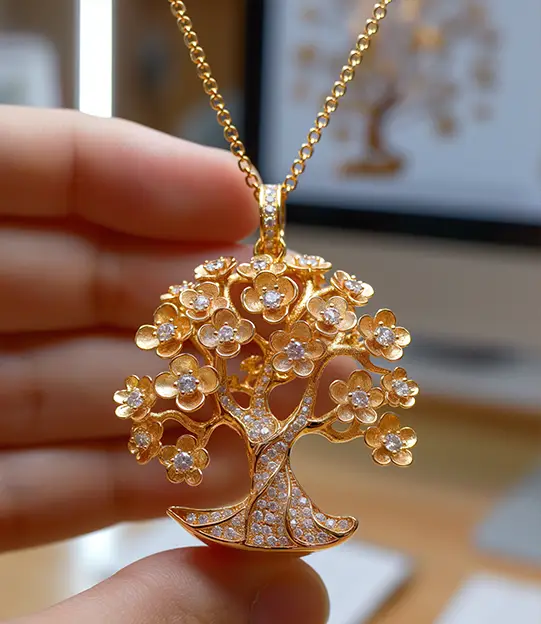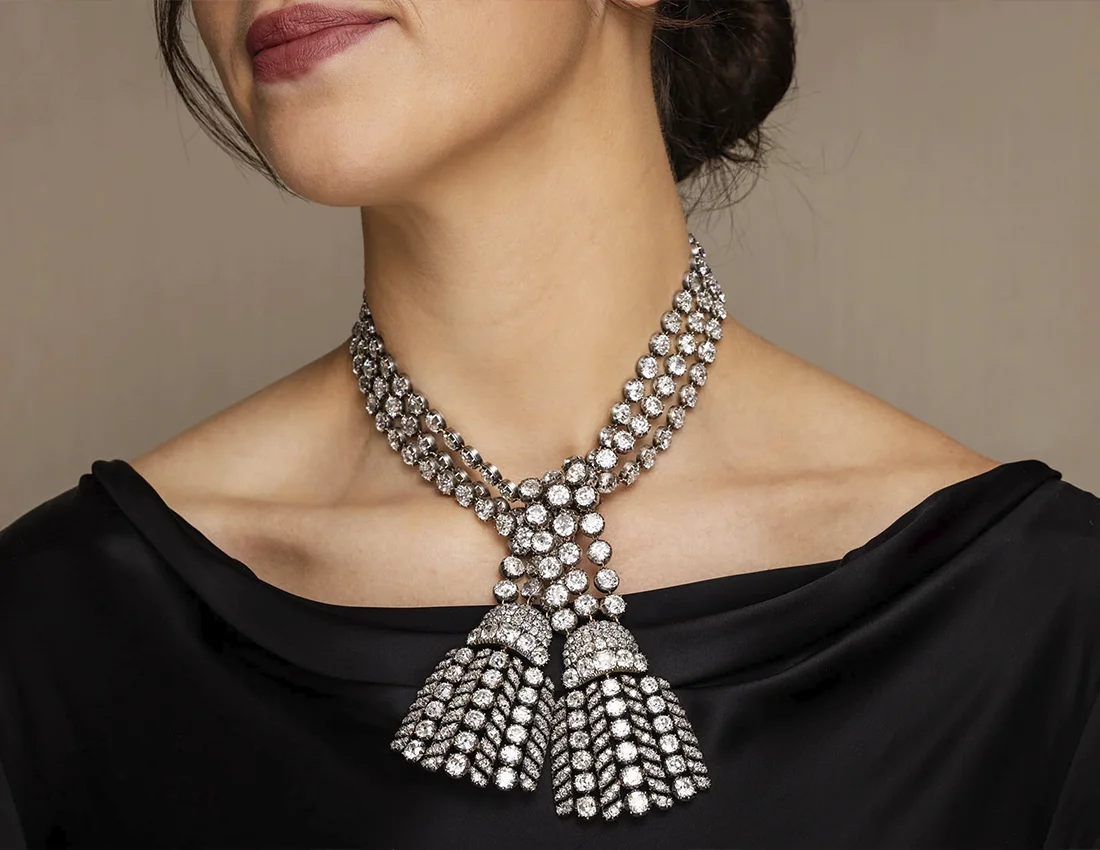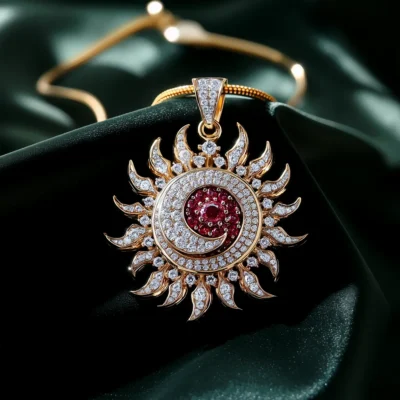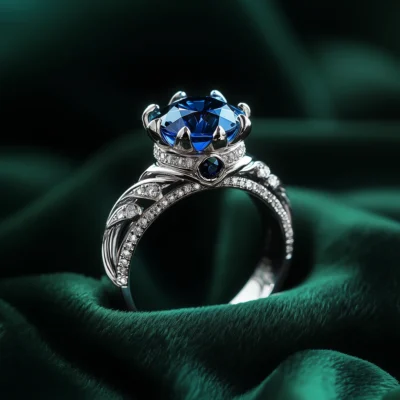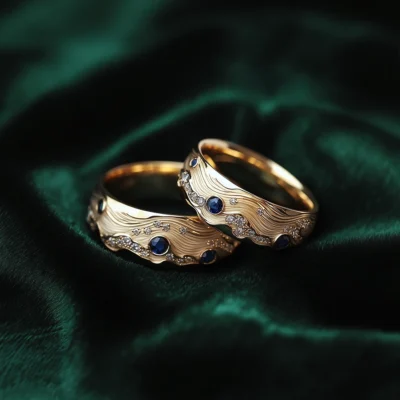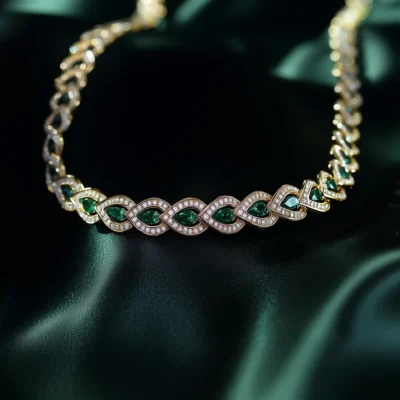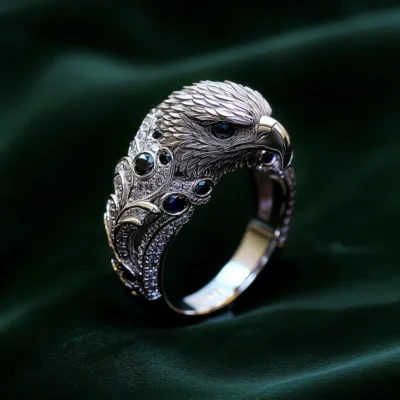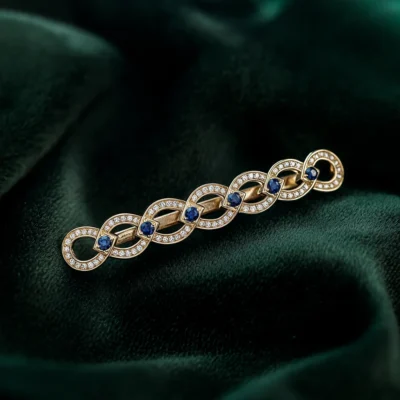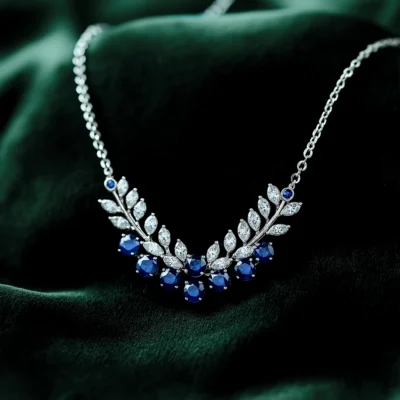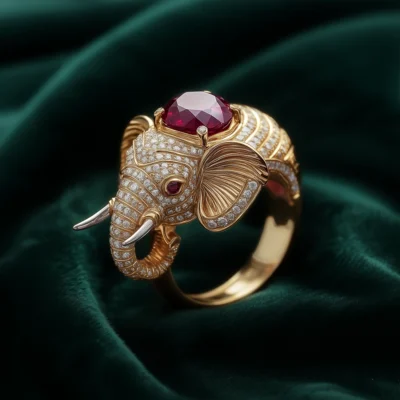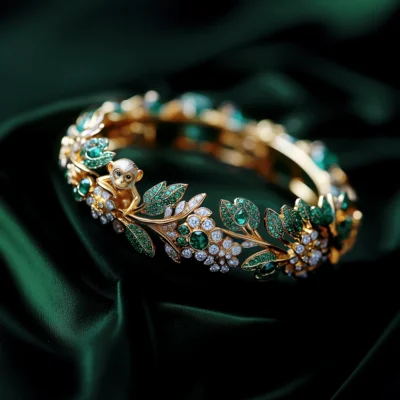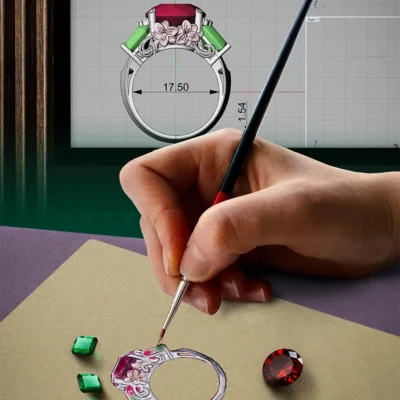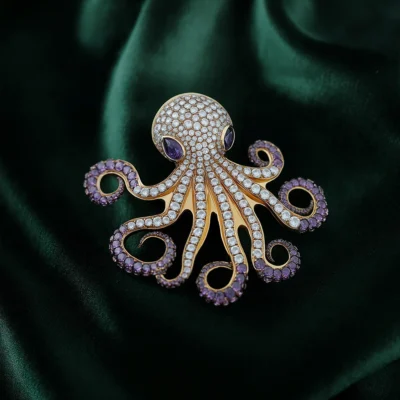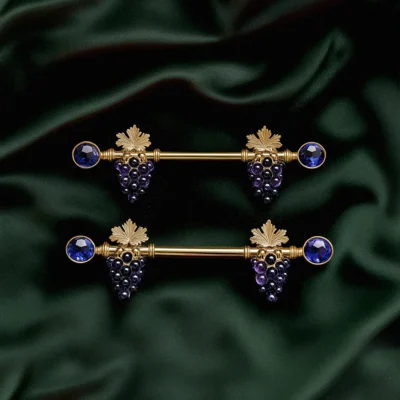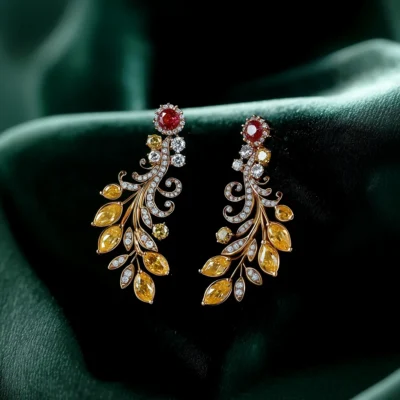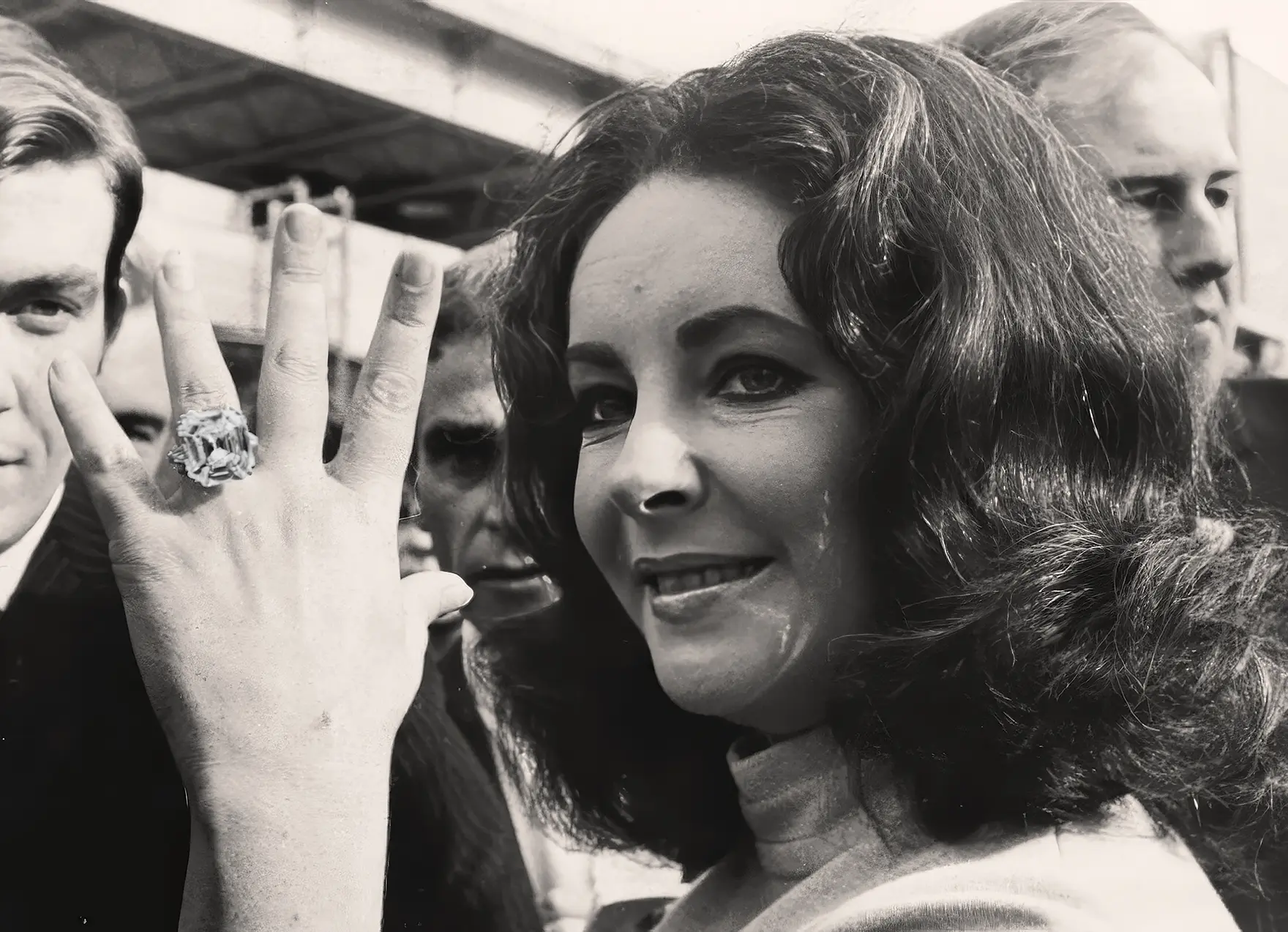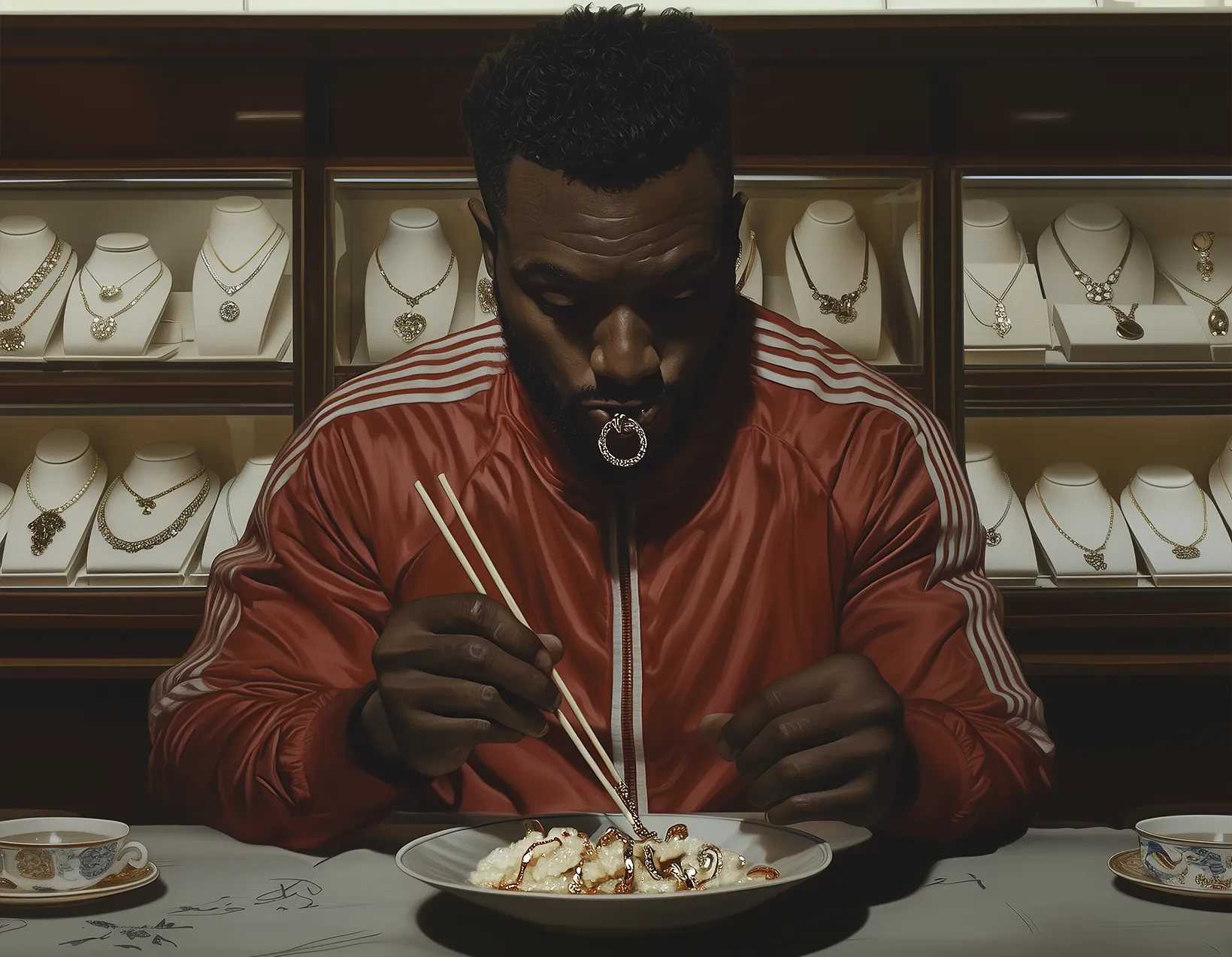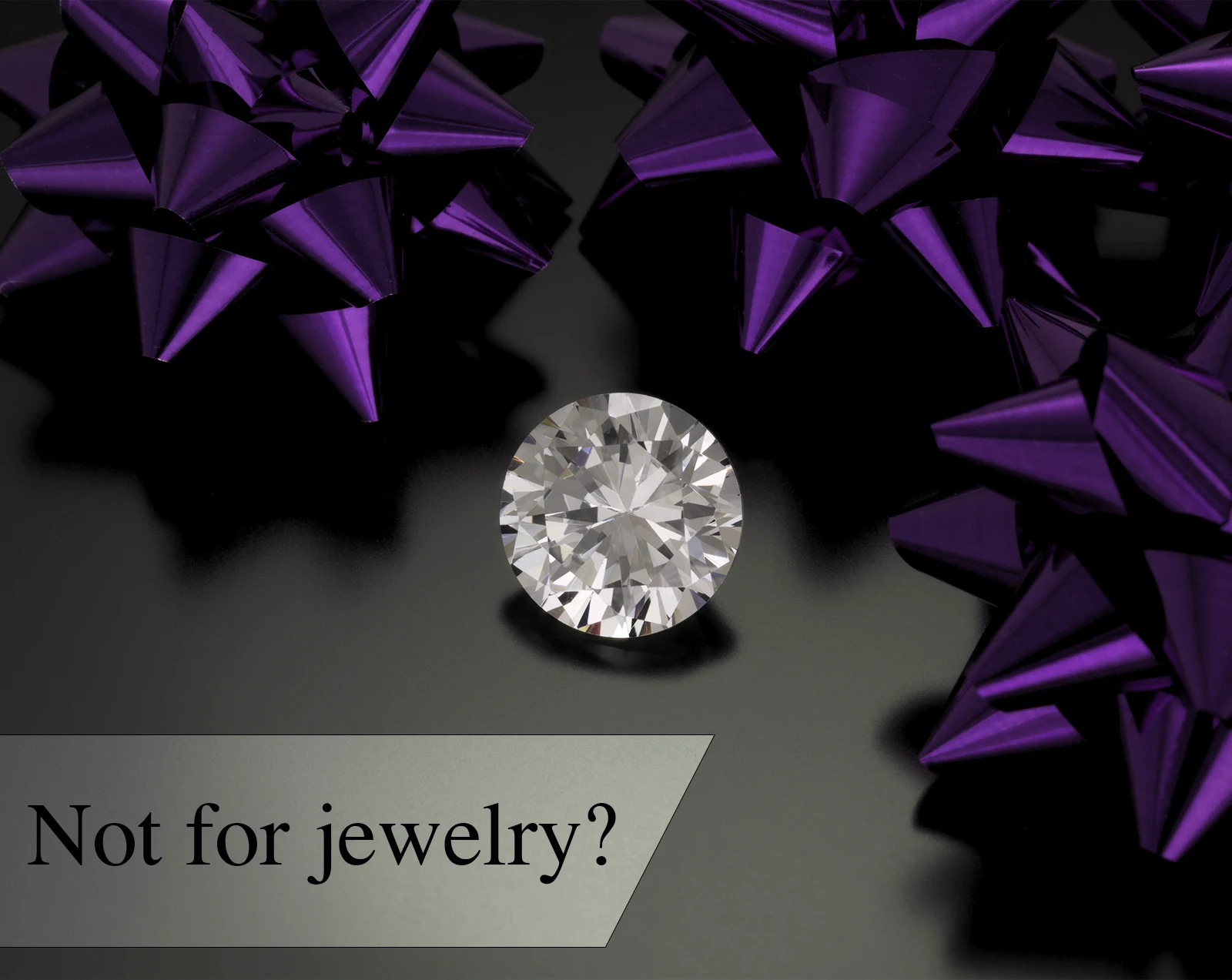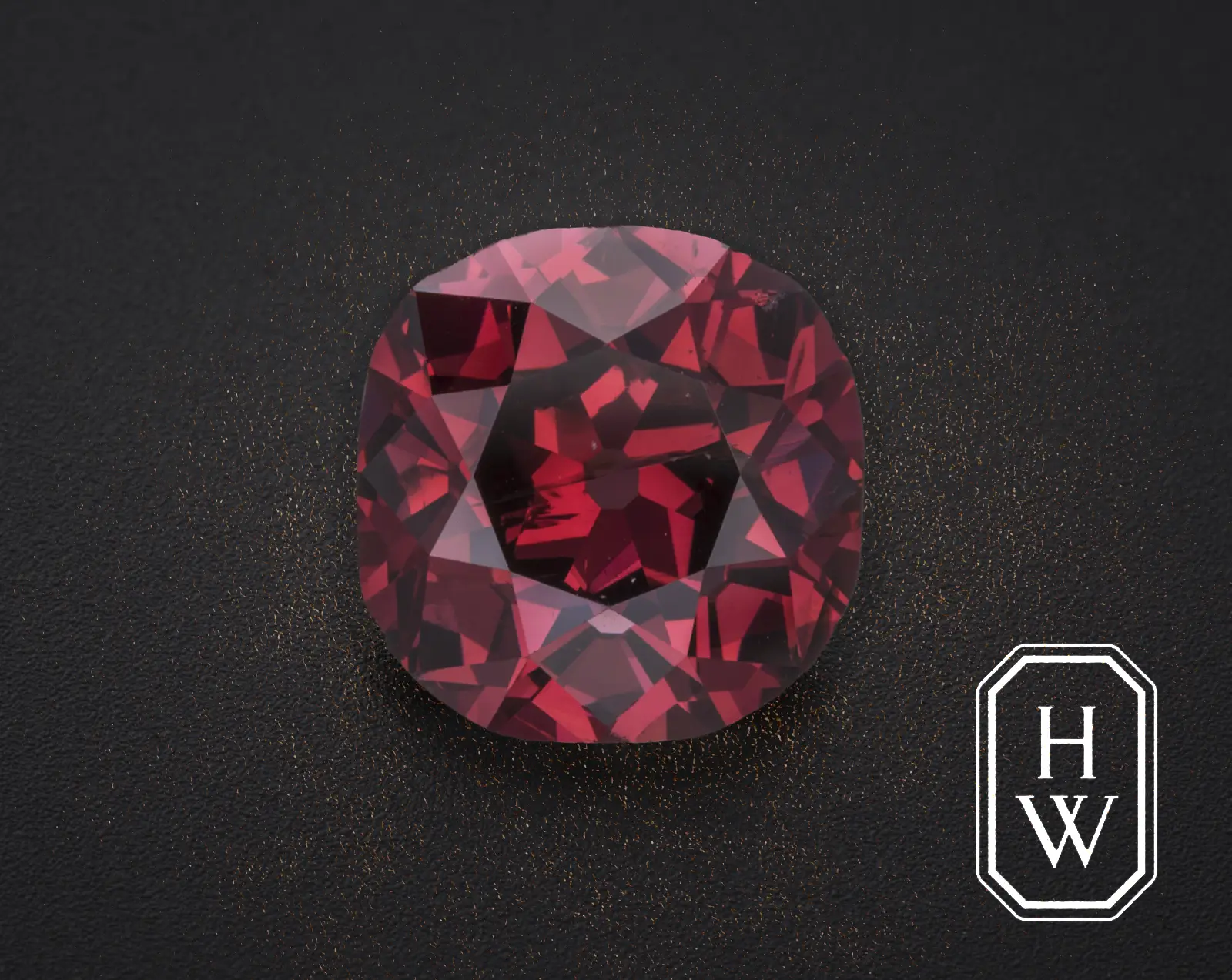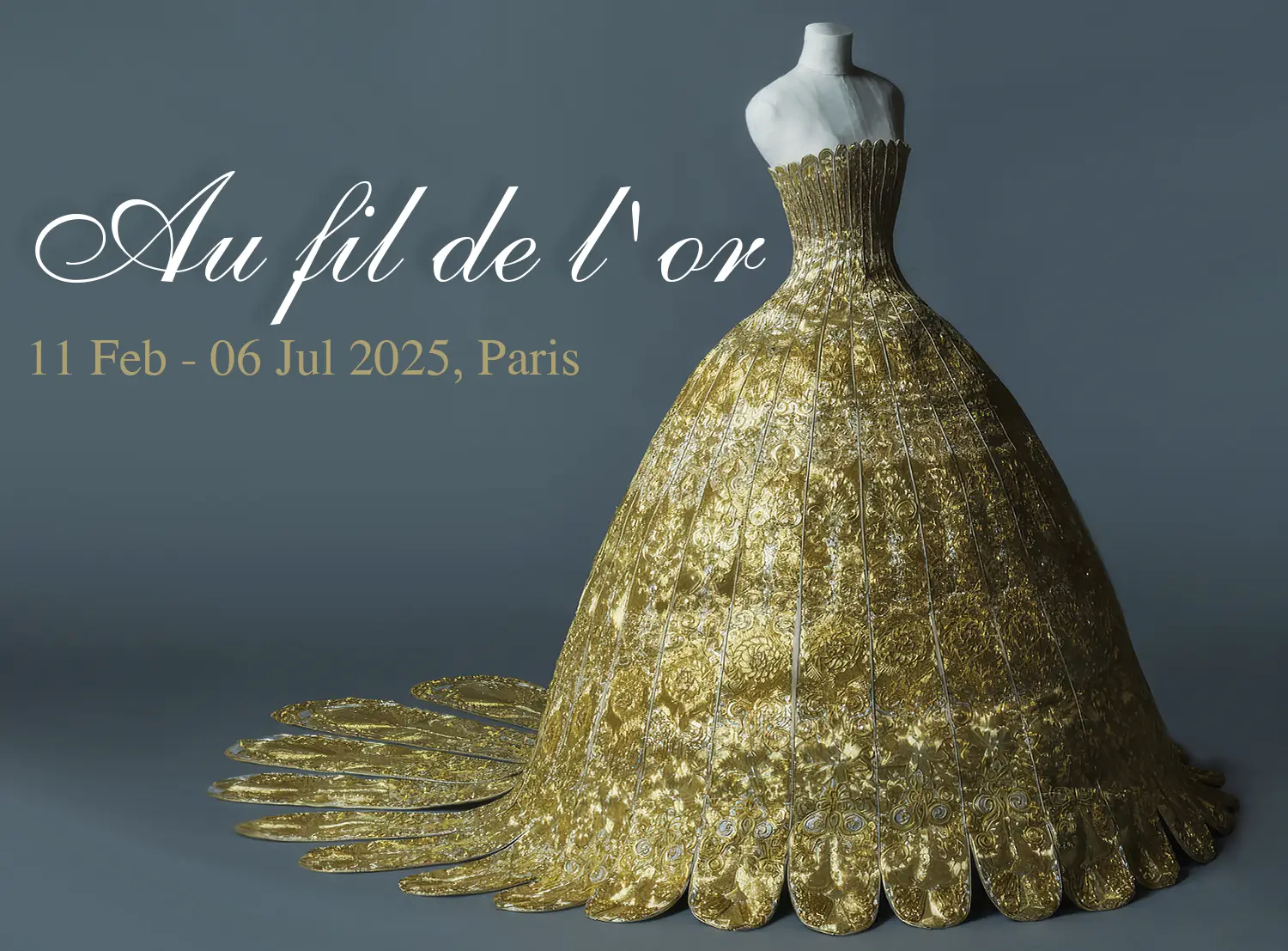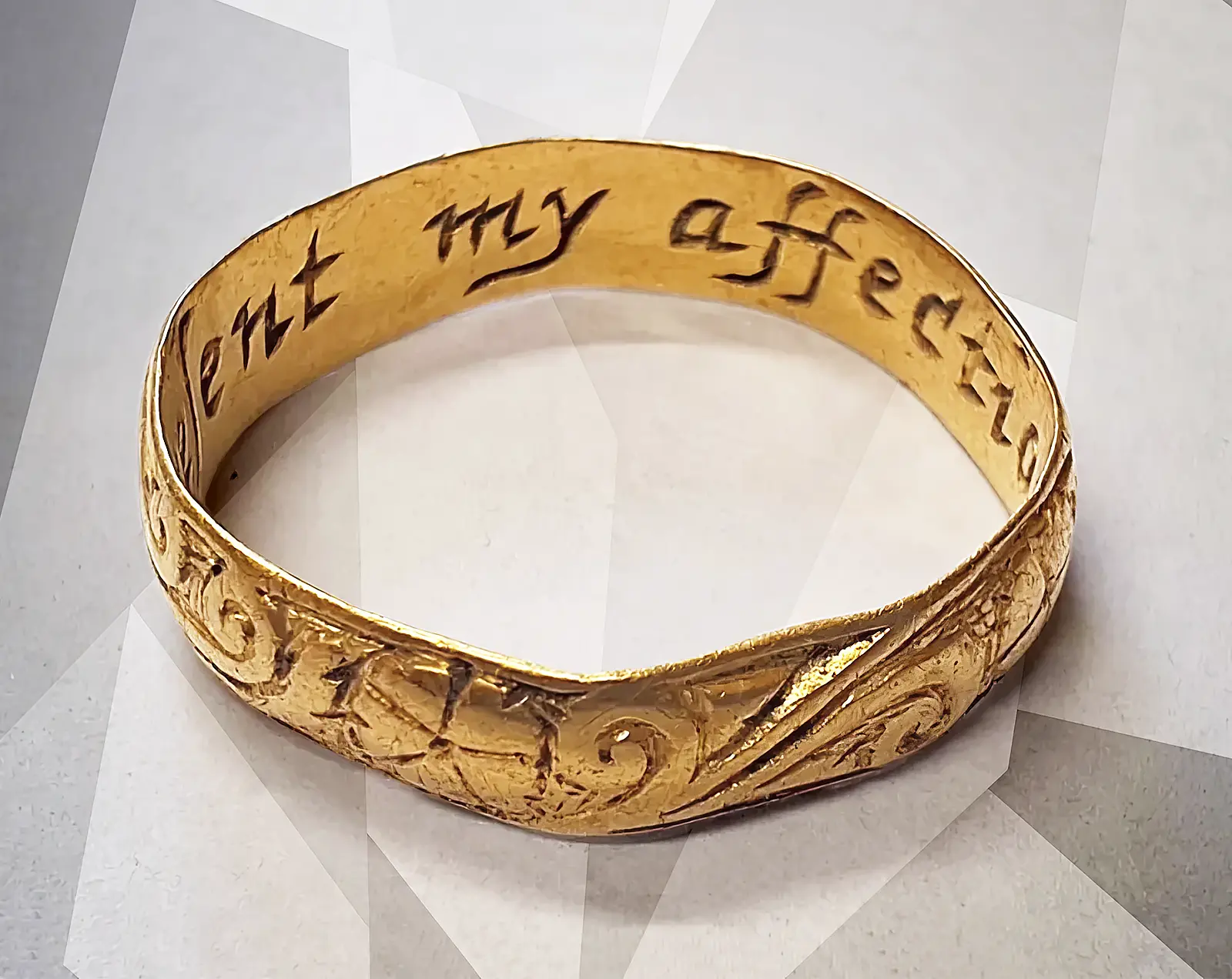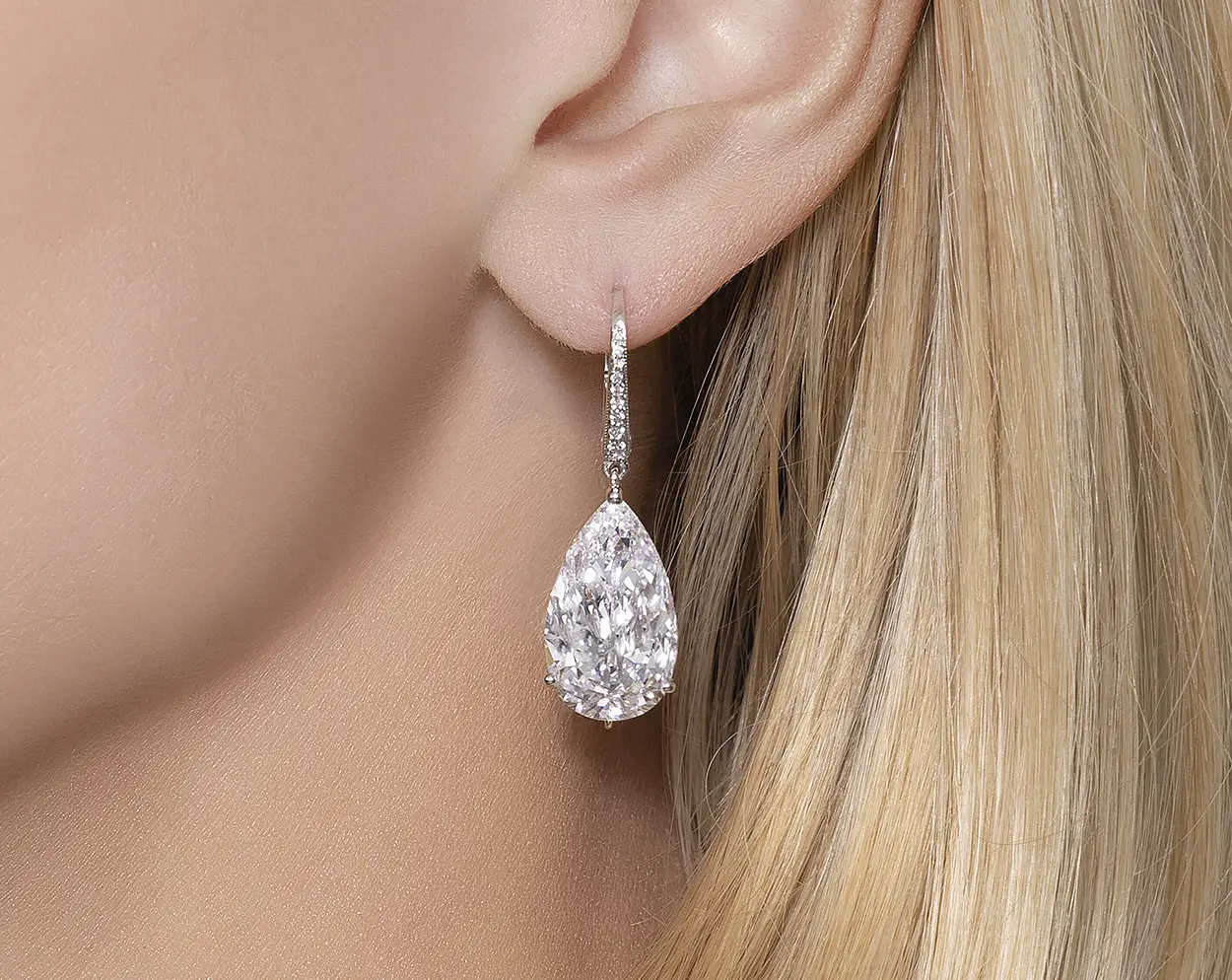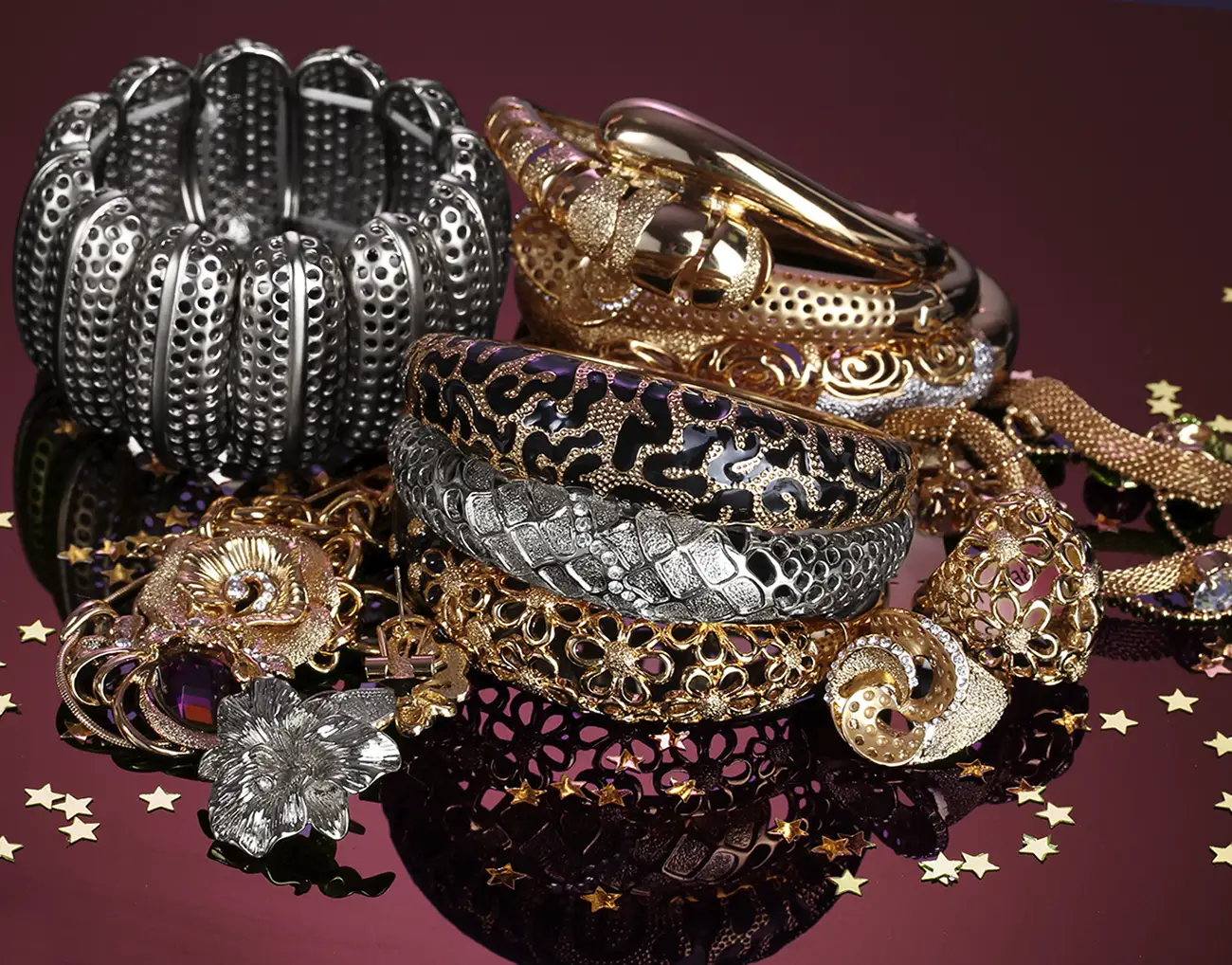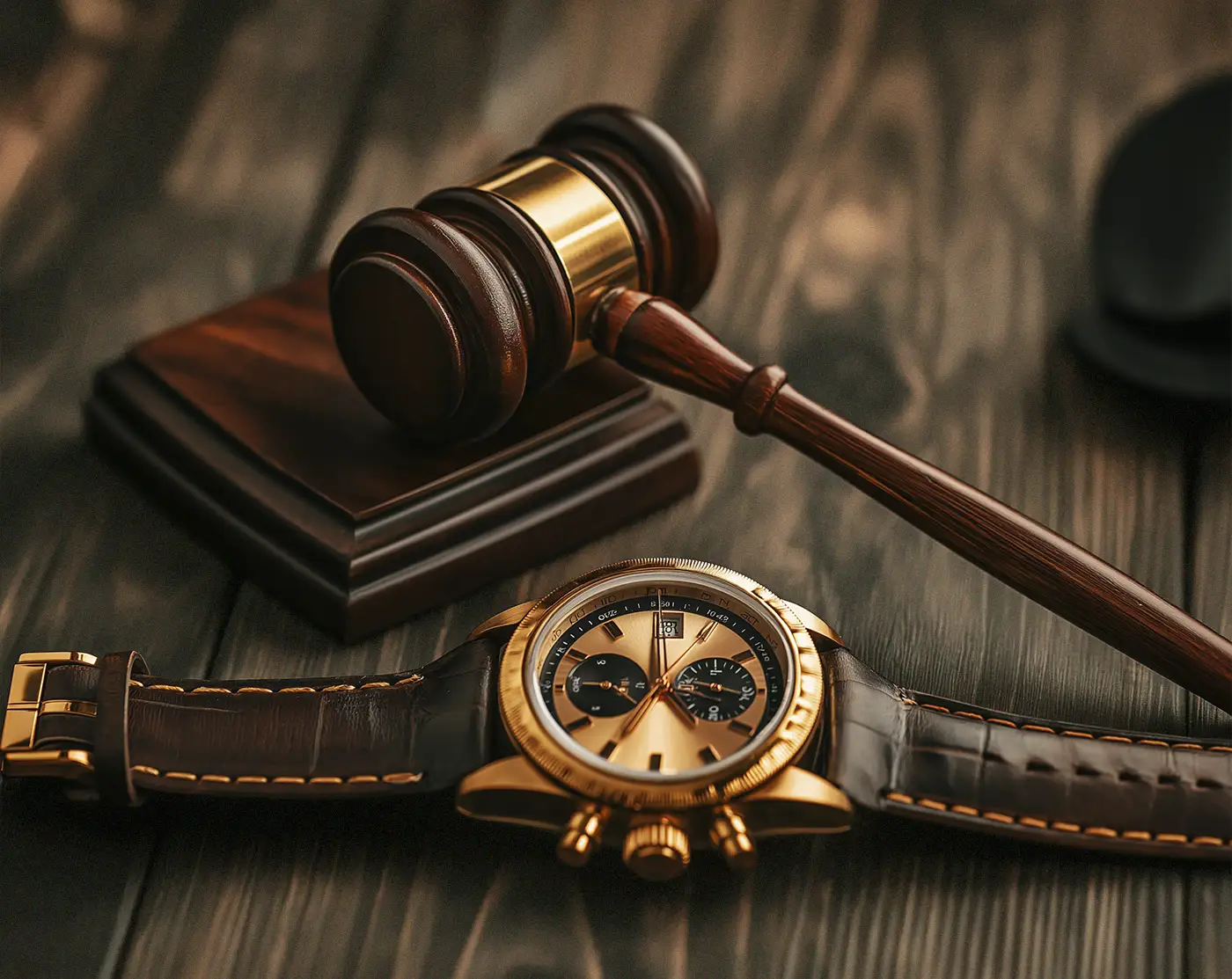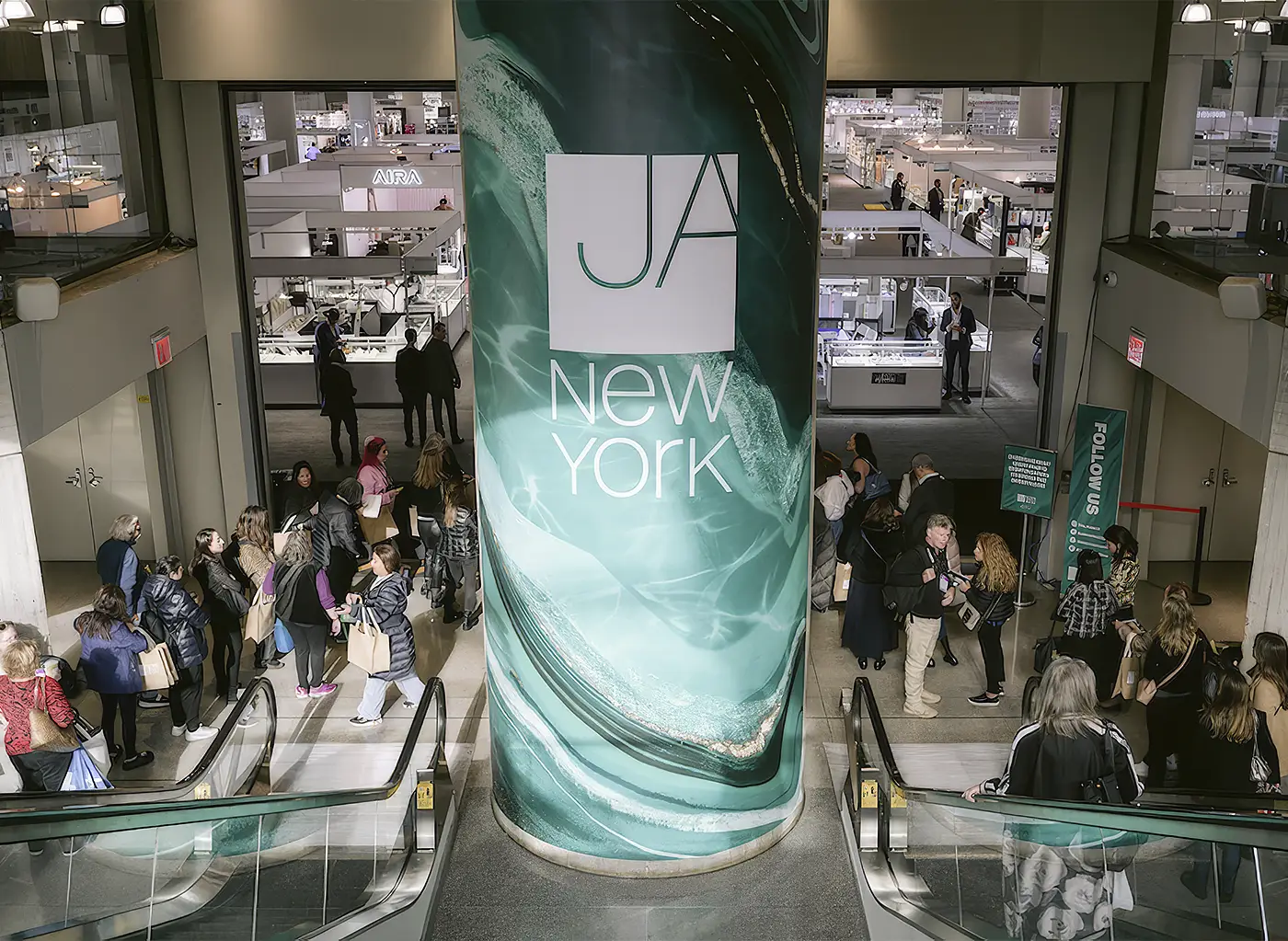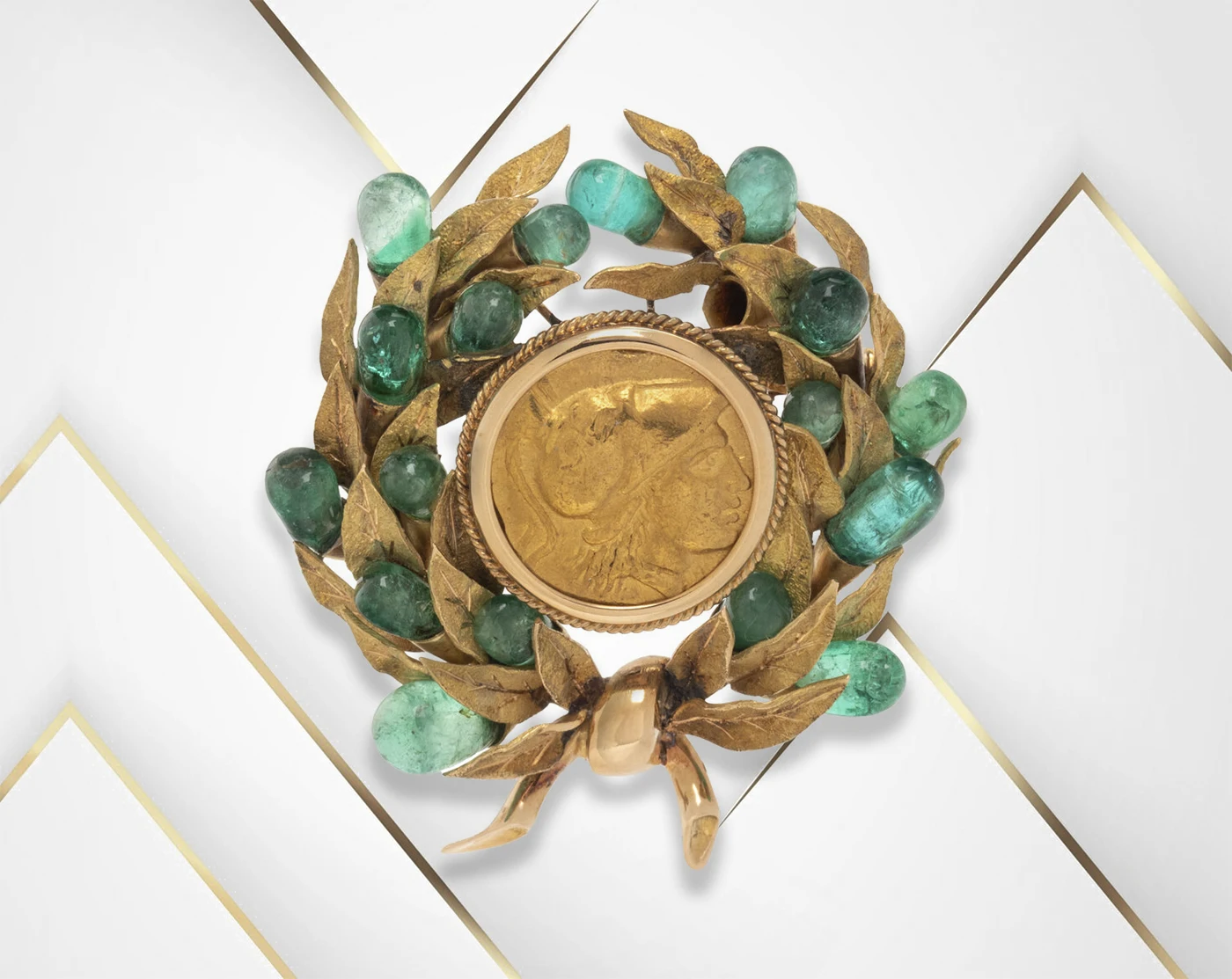Don’t you feel awe when seeing historical pieces of jewelry that have survived the test of time? Isn’t there something special in being able to witness something that has been around in royal families for generations and now is being presented to the general public? Well, you don’t really have to wait that long before you get the chance to see something like that!
Get ready to see an iconic diamond necklace totaling about 300 ct at the coming Sotheby’s exhibitions in Hong Kong (October 3-5), New York (October 9-10), Singapore (October 18-19), Taipei (October 21-22), and Dubai (October 28-30). This sparkling tour will be followed by an online bidding event on October 25, as well as two prestigious jewelry sales taking place in Geneva – Royal & Noble and Magnificent Jewels!
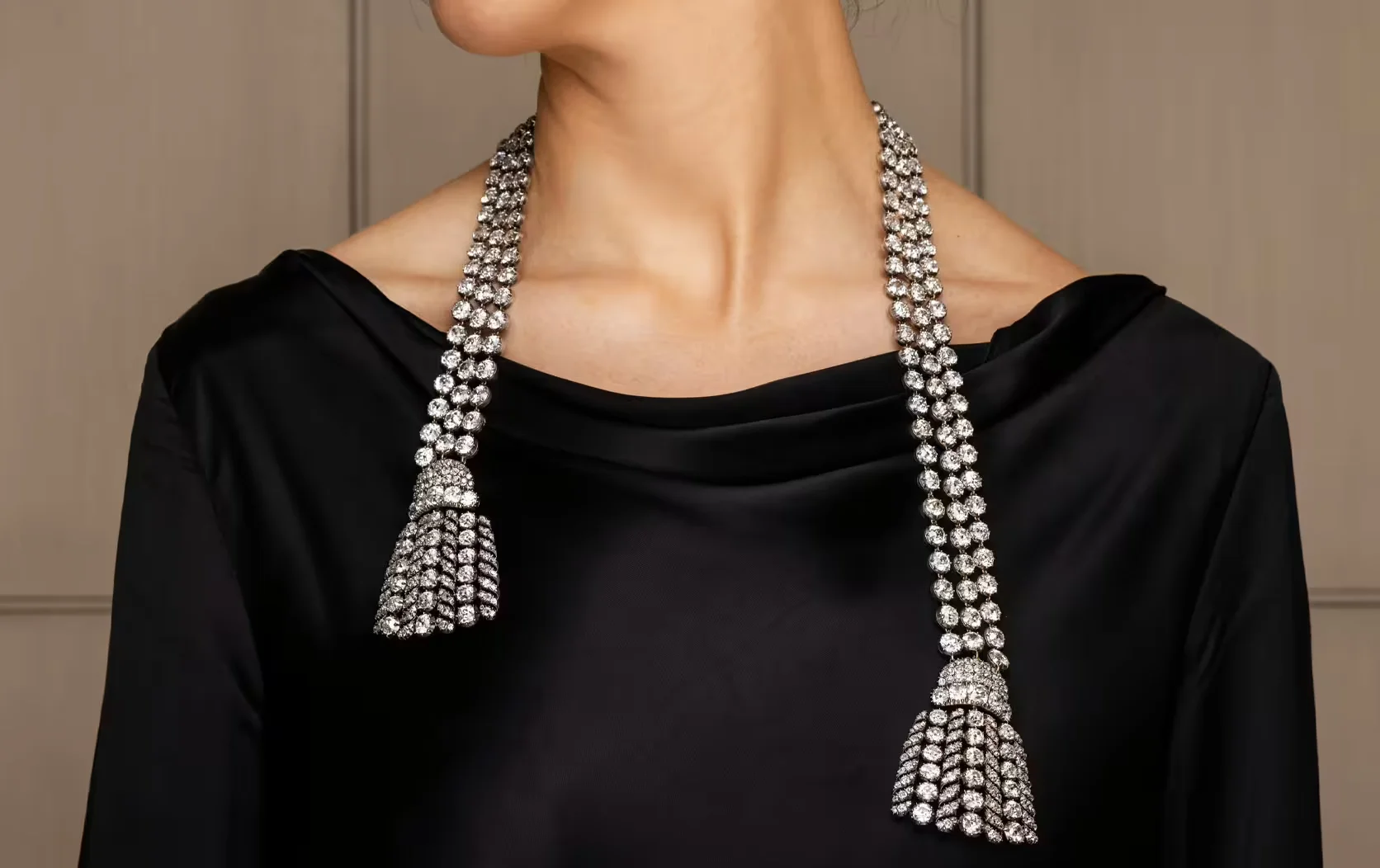
Now, let’s take a look at the star of the show – the exquisite 300-carat piece that has already seen two coronations and contains diamonds that once belonged to Marie Antoinette. The necklace design incorporates three strings of diamonds that end with elegant tassels. The piece was likely made several years before the French Revolution, that is, in the 1880s.
Historically, the piece has been worn by royalty and other noble individuals from the English and French courts. It’s known that the piece has changed hands several times, and only some of the wearers have been documented. Marjorie Paget (the daughter of Henry Manners, the Duke of Rutland) and Elizabeth Paget (the seventh Marquess of Anglesey) both wore this stunning piece to coronations (the first took place in 1937 and the second 16 years later). There are many historical pictures of the coronation guests which prominently feature this diamond piece.
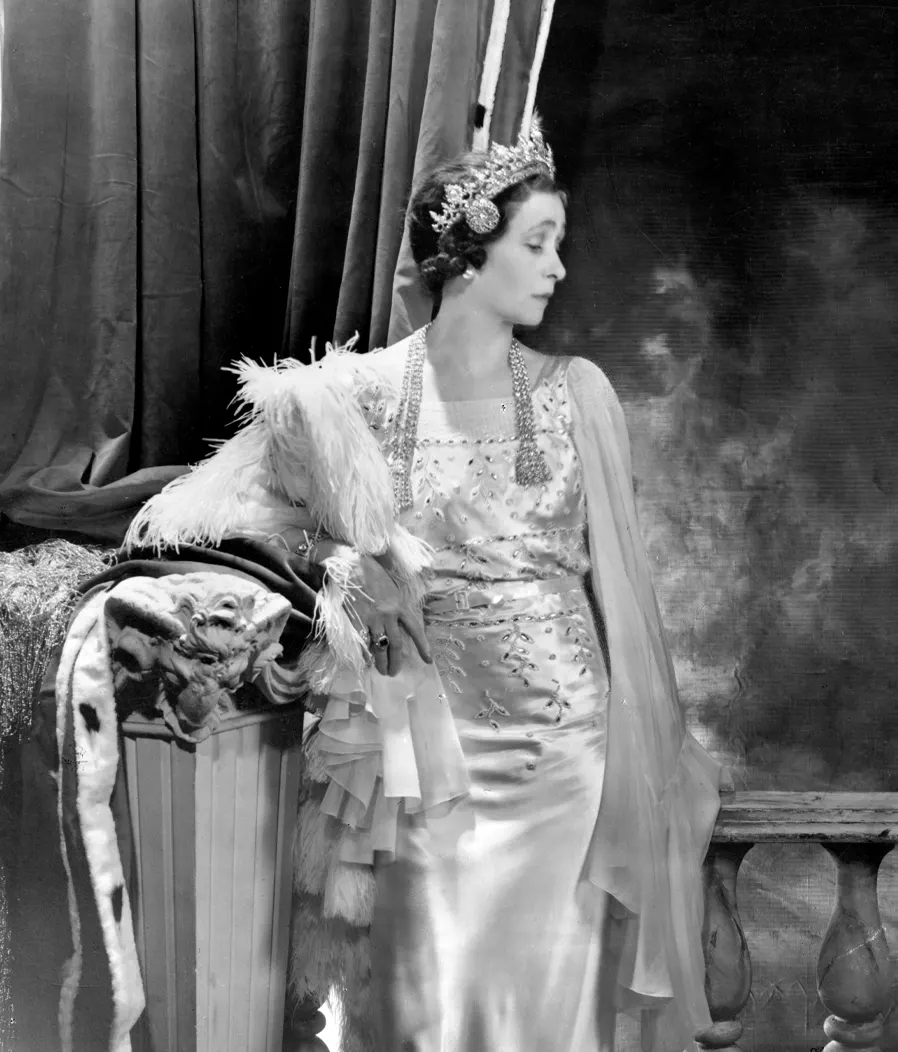
Marjorie Paget, the Marchioness of Anglesey, dazzles in her coronation robes and exquisite diamond jewelry at the coronation of King George VI, captured by the renowned photographer Cecil Beaton in 1937
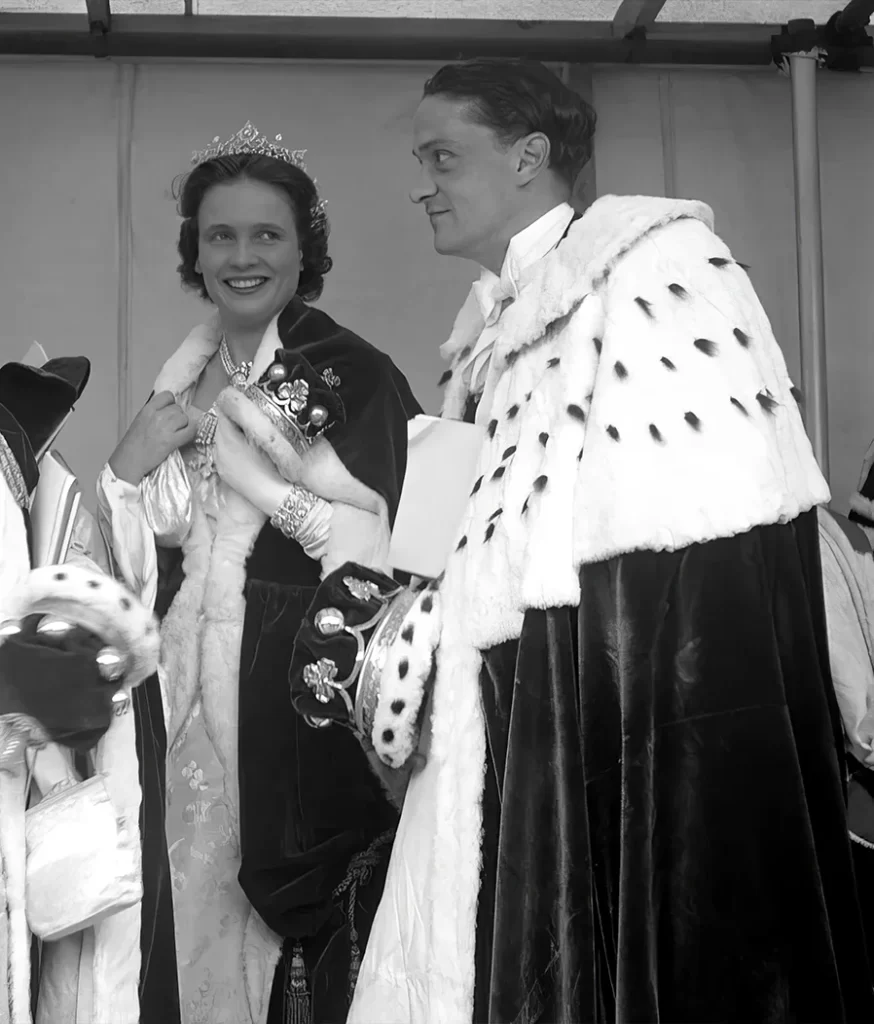
The seventh Marquess and Marchioness of Anglesey attended the coronation of Queen Elizabeth II in 1953, making a striking impression at this historic event.
In about 1965, Elizabeth decided to sell her prized possession, which toured for some time as a part of various exhibitions. For example, it was presented at the American Museum of Natural History in the second half of the 1970s. After its touring career, the necklace ended up in one of the Asian private collections and has been there ever since before the current owner decided to share this wonderful piece with the world.
The piece belongs to the Georgian era and exudes lavishness. The type of necklace can be classified as négligée, which is a French word for an untidy person. Both untied and tied options are acceptable for wearing the piece in public.
The stones range between one and one and a half carats and have marvelous purity. Specialists believe they came from the famous Golconda region in India. Although these mines have been exhausted, they are revered to this day as a source of some of the purest diamonds on the planet. The Golconda was known to produce gorgeous stones as far back as 2,500 years ago but now rarely yields any finds.
Sotheby’s claims that at least some of the stones included in the piece once belonged to the scandalous necklace of Marie Antoinette that might have led to her ultimate demise. As you probably know, the infamous “affair of the necklace” was one of the things that fueled the French Revolution.
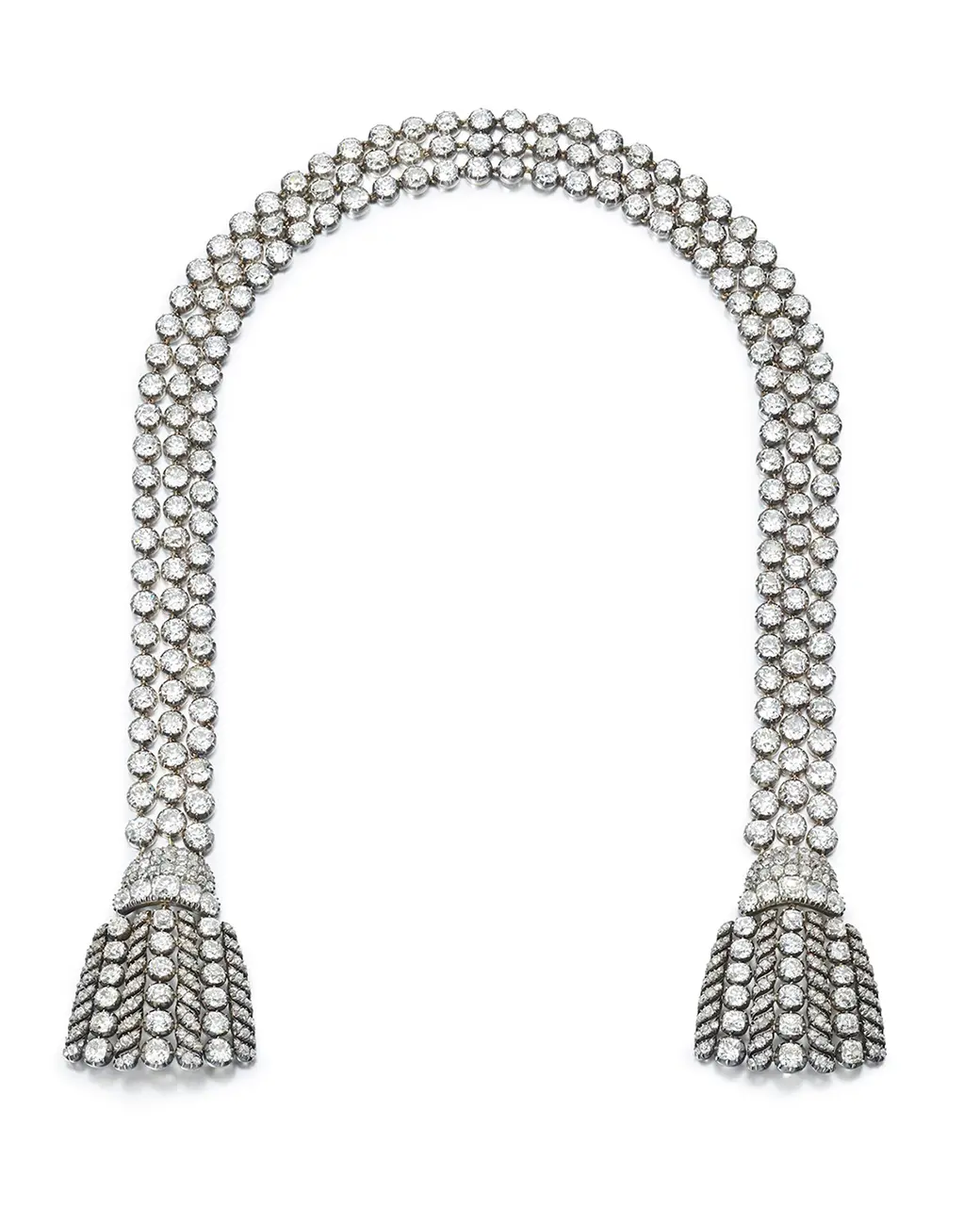
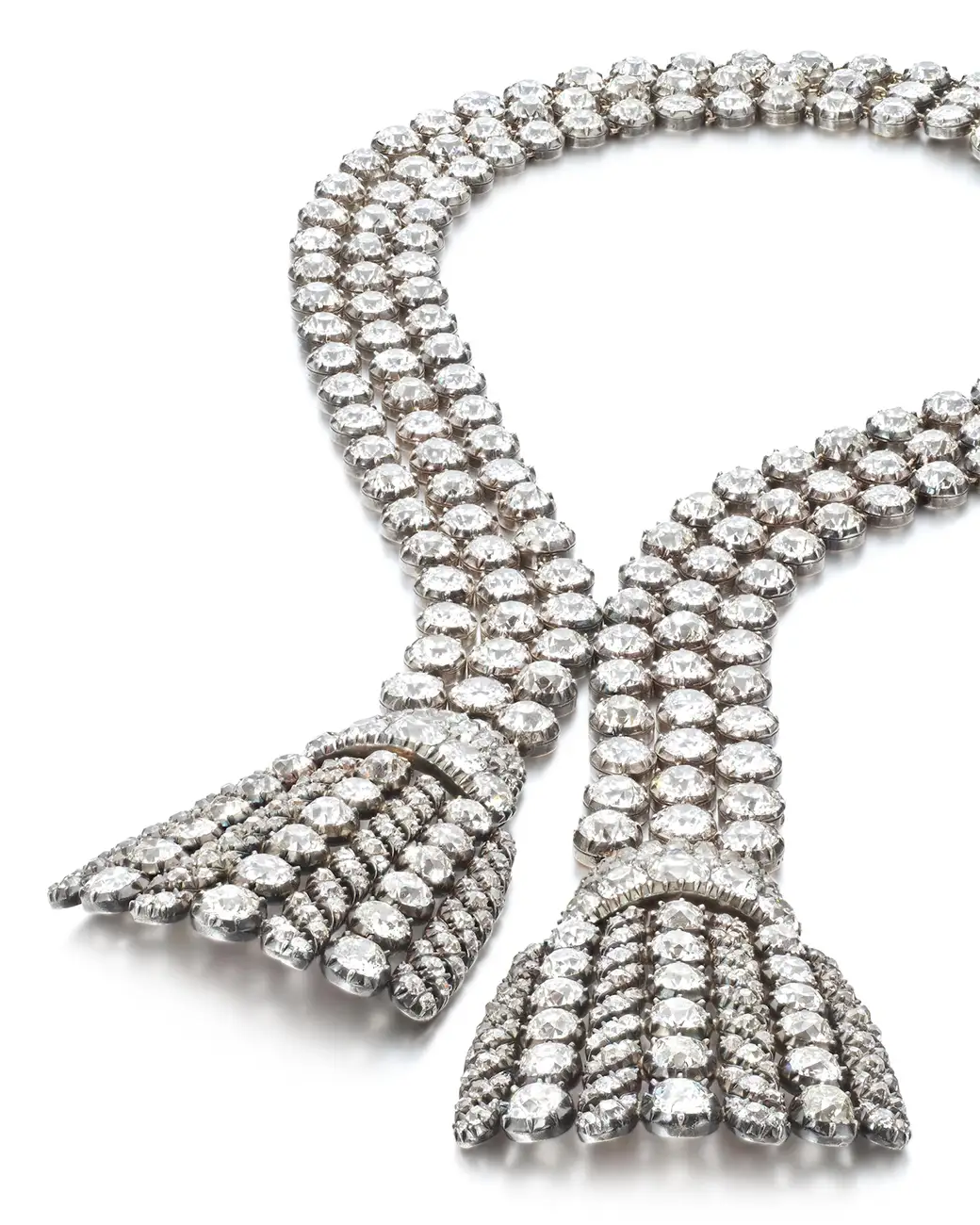
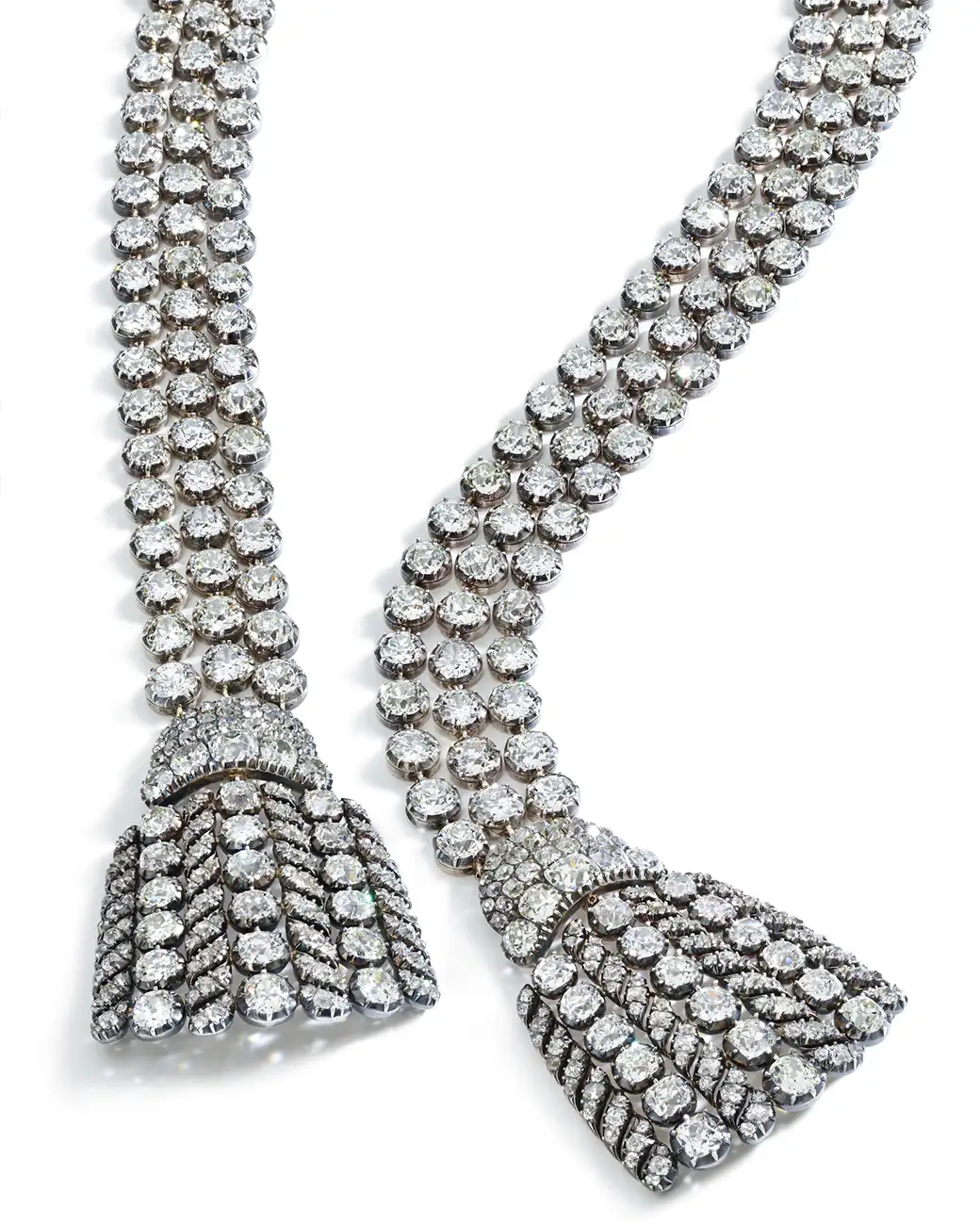
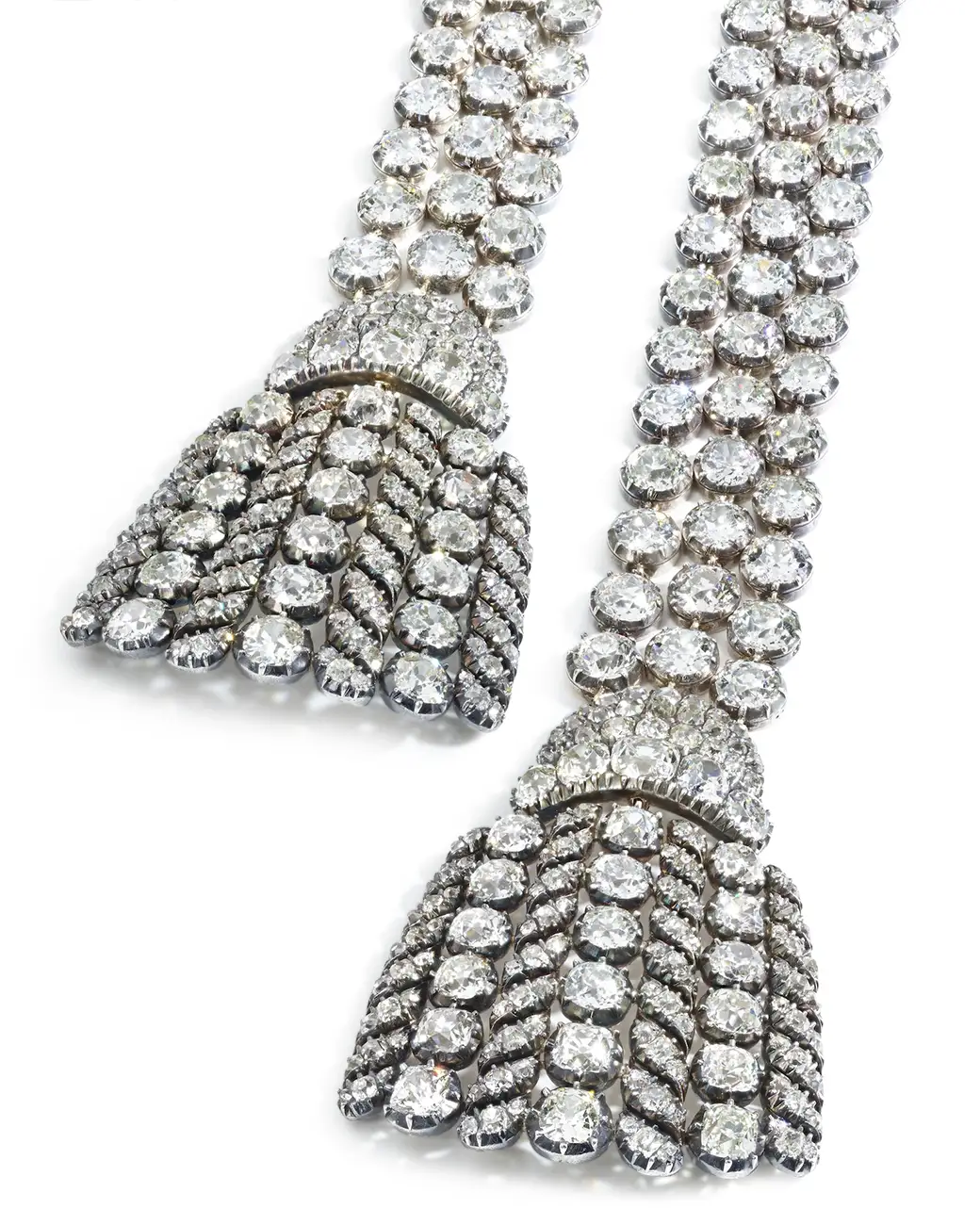
Andres W. Correal, the chairman of the auction house, can’t contain his excitement over presenting this piece. He calls it “a sublime survivor” of the Georgian period and a piece of unparalleled opulence. Although Correal has seen his fair share of noble jewels in his lifetime, there’s something special about this piece that beats all other treasures from the same epoch. If you were to compare this necklace to other surviving Georgian specimens, it would “stand head and shoulders” above them, according to Sotheby’s chairman.
The value of the necklace comes not only from the diamonds themselves (which are worth a huge fortune even without the setting) but the masterful design and craftsmanship that not only stood the test of time but surpassed the time itself. Even by current standards, the design looks fresh, bold, and alluring, and has a lot to offer to modern designers. Very few pieces that were made 200+ years ago could boast such relevance and beauty.
Video showcases a rare 300-carat diamond necklace linked to Marie Antoinette set to auction in November, with an estimated value of up to $2.8 million. Recently displayed for the first time in 50 years at Sotheby’s London, the 18th-century jewel features three rows of diamonds and elegant tassels. (Associated Press channel report)
There have been different estimates as to how high the bids would go. The most optimistic forecasts promise to bring around 3 million dollars to the seller, and the most pessimistic ones – almost 2 million. Either way, the necklace has become one of the most famous and valuable pieces to ever be sold by Sotheby’s. The auction house is honored to be a part of the necklace’s precious history. We hope you’ll get a once-in-a-lifetime chance to see this masterpiece with your own eyes before it goes to its future owner.

